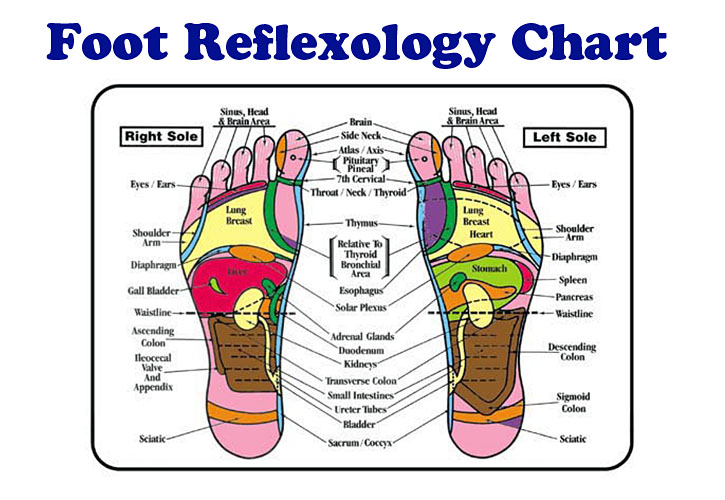
The healing art of what we
call Reflexology dates back to 5,000
BC where we understand that it was practiced in ancient India, Egypt and China.
Trade routes between these countries, their Asian neighbors and eventually the
West during the Middle Ages brought a wealth of knowledge about many ancient
healing practices. Reflexology is one of the oldest surviving healing
techniques still practiced today.
According to author Mark
Beck, “…reflexology is based on the principles that reflex points in the hands
and feet are related to every other organ in the body. By applying pressure to
a reflex point, the practitioner can effect certain beneficial changes.” (Beck
776)
How Does It
Work?
Neuro-lymphatic
Reflexes located throughout the body including the hands and feet help to
normalize, balance and encourage homeostasis within the body when properly
stimulated. There are several forms of reflexology, but foot reflexology is the
most common form taught and practiced today.
Reflexology is
holistic wellness technique affecting multiple systems and functions including;
the lymphatic system, the endocrine system, the circulatory system, the
meridian system, the nervous system and the proprioceptive system. (Stone 18)
Benefits
of Reflexology
·
Reflexology relieves stress by eliciting the relaxation response.
(Wright 14)
·
Reflexology is a clothed therapy and is a perfect alternative for
individuals who do not feel comfortable having massage.
·
Reflexology is non-invasive or non-painful.
·
Reflexology benefits people of all ages.
·
Reflexology improves overall function of the body and is a holistic
form of therapy.
·
Reflexology teaches and promotes healthy body awareness.
·
Reflexology improves circulation of blood and lymph and benefits nerve
function. (Wright 30)
·
Reflexology is helpful for painful conditions of the feet and/or hands.
·
Hand and Foot Reflexology is perfectly suited for self-care.
·
Reflexology sessions of the hands and/or feet affect both hemispheres
of the brain. (The right hand
or foot is dominantly controlled by the left hemisphere of the brain and left
hand or foot the right hemisphere).
Contrary
to popular belief, Reflexology does not have to hurt to be effective in fact
the opposite is true. Working with the body’s reflexes without creating pain
allows the body to sense dysfunction and make internal adjustments that are
noticed as healing.
When
a Reflexology session is given without pain
it creates a more optimal learning
situation for the body. Non-invasive therapy means that there should be no
pain involved.
Reflexology Reference Charts

There are many different versions of foot
and hand reflexology charts. There is even an interactive version for your
phone. Reflexology charts will enable you to map the reflexes, but If you are
interested in doing Reflexology as a hobby or even a profession taking a live
course or two will enable you to work with the reflexes with confidence.
A basic Reflexology course
should help the student to:
· Understand the contraindications (precautions)
· Learn the benefits of Reflexology
· Understand how to give a therapeutic Reflexology
session
· Market and price your Reflexology session
appropriately
· Feel confident about performing non-invasive
Reflexology techniques
· Be informed about the licensing laws in your state.
Sources
Beck,
Mark F. Theory & Practice of Therapeutic Massage 4th Edition. New York;
Thomson
Delmar Learning. 2006.
Stone,
Paula S. Therapeutic Reflexology, A Step-by-Step Guide to Professional
Competence.
Boston; Pearson Education Inc. 2011.
Wright,
Janet. Reflexology and Acupressure: Pressure Points for Healing. CRES
Publishing.
2000.
Bio:
Kim
Krost is owner of Integrative Healing Institute in San Antonio Texas. She is a licensed
massage therapist and massage therapy instructor teaching a variety of wellness
classes including Reflexology. In addition to management of the Institute she
has maintained a holistic bodywork practice since 1999 using Lymphatic Drainage
Therapy, Reflexology and Natural Reflex Therapy®, a technique she co-created
that helps to balance endocrine system function in the body.
No comments:
Post a Comment